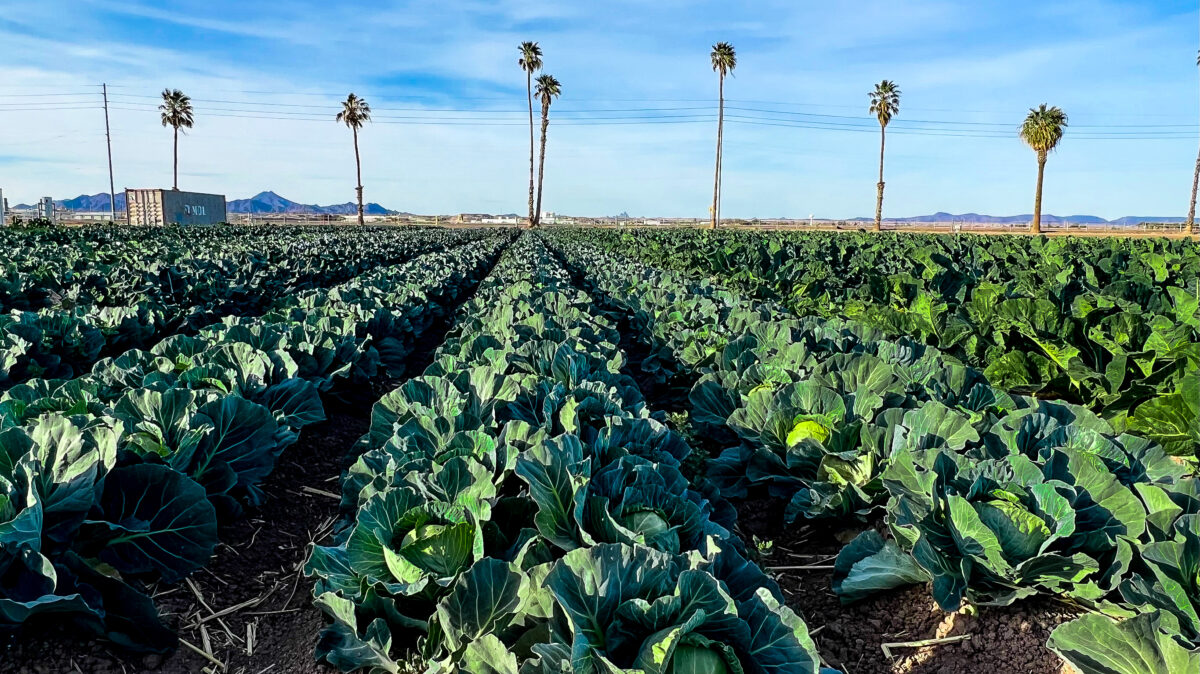Innovation is Key for Central Arizona Farmers
TOPICS
InnovationGuest Author
Special Contributor to FB.org

photo credit: AFBF Photo, Terri Moore
Guest Author
Special Contributor to FB.org
By Shiloh Perry
Arizona is known for its exceptionally hot summers and mild winters. It’s also one of the few places in the country where people can farm 365 days a year. This makes the Grand Canyon state a prime location for diverse and innovative agriculture operations. Farmers in Central Arizona are capitalizing on this opportunity their state’s climate and landscape provides.
I recently had the opportunity to visit farms in Queen Creek, Arizona, as part of the Agricultural Media Summit. I experienced how Steve Sossaman, Jeff Zimmerman and their team at Sossaman Farms and Hayden Flour Mill utilize all seasons on their farm to be forward-looking, preserve agriculture and connect with consumers.
He says the top four components of the millennial restaurant diet are beer, bread, pasta and whiskey.
Sossaman, a fourth-generation farmer and member of Arizona Farm Bureau, grows ancient and heritage grains and alfalfa. Ancient and heritage grains have never been hybridized and can be 200 years old or older. These specialty grains are appealing to chefs and aren’t readily available. Ancient grains are technically a little older than heritage grains.
About six years ago, Sossaman partnered with Zimmerman to create Hayden Flour Mill at Sossaman Farms, reflecting their shared passion for specialty grains. Hayden Flour Mill is a micro mill that mills small quantities of grain using traditional methods.
Sossaman prides himself on being on the cutting edge and thinking collaboratively. He attributes his innovative approach to the insight he receives from his children about the latest trends, technology and more specifically what their generation, now the world’s largest generation, is looking for in foods, drinks, restaurant experiences and agriculture. He understands what millennials want and that grains are an essential part of that. He says the top four components of the millennial restaurant diet are beer, bread, pasta and whiskey.
Sossaman and Zimmerman have developed milling machinery specifically for their operation, gathering parts from around the world, although they have not sought any copyrights. Sossaman thinks of the machinery as “open source.” He wants people to try his machinery if they find it useful and consult with one another to get the best profits. He also aspires to make ancient grain seeds available to everyone.
In all his business endeavors, Sossaman works to preserve agriculture’s heritage. He says that the major question all agriculturalists strive to answer is, “How do we preserve farming?” Sossaman Farms and Hayden Flour Mill do this by regularly giving public tours and hosting events. They also partner with local chefs and markets that focus on locally sourced products. Sossaman’s goal is to showcase Arizona agriculture in what he describes as a “museum grade” way. He also worked to develop an agri-tainment district zoning ordinance for the town of Queen Creek to provide landowners with greater flexibility for projects that support and enhance agriculture.
Sossaman and Zimmerman are also partnering with other Arizona farmers to advance the state’s heritage grain movement. These two farmers and others like them are the drivers behind what makes Arizona agriculture so unique and exciting. Their efforts and ways of thinking will lead American agriculture into its influential future.
Shiloh Perry is media relations specialist at the American Farm Bureau Federation.
Trending Topics
VIEW ALL